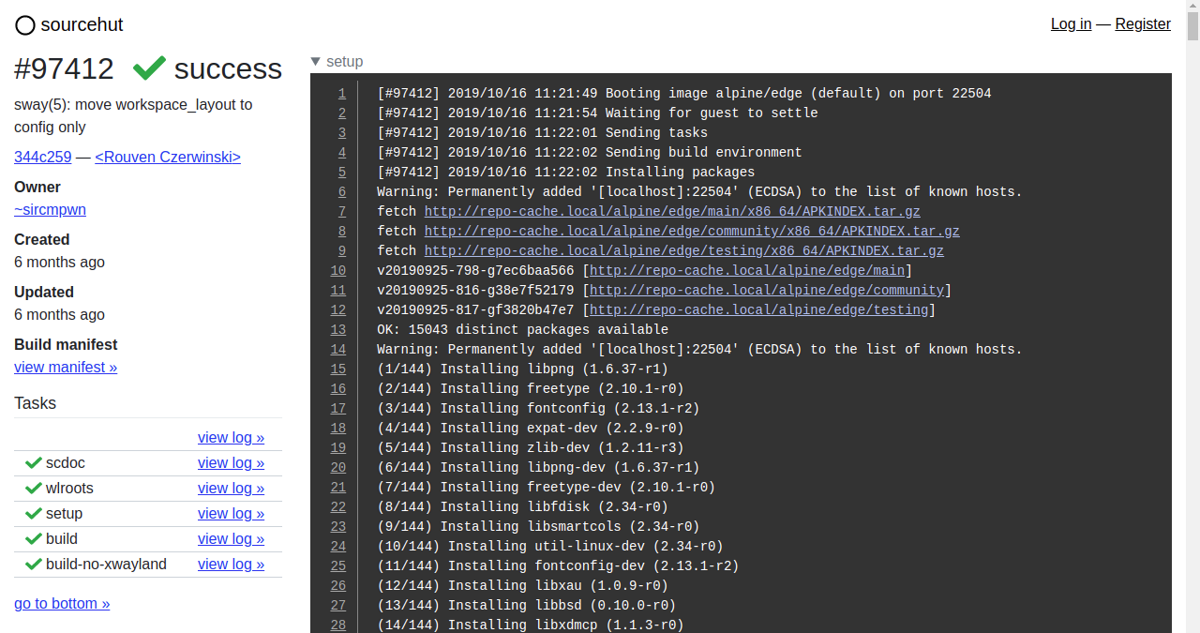
Drew DeVault, Author of the Sway User Environment and Aerc email client, announced the implementation of a project center in your collaborative development platform Source Hut, in which now developers can now create projects that combine multiple services, as well as viewing a list of existing projects and searching among them.
Platform Sourcehut stands out for the possibility of offering a complete work without JavaScript, high performance and work organization in the form of Unix-style miniservices. The project functionality in Sourcehut is made up of separate components that can be combined and used separately, for example just tickets or just code without linking the repository with tickets.
The ability to freely combine resources makes it difficult to determine which resources are related to the project.
The project center solves this problem and allows you to gather all the information related to the project in one place. For example, on a project page, you can now put an overview and list the repositories included in the project, bug tracking sections, documentation, support channels, and mailing lists.
For integration with external platforms, an API and a system are offered to connect web processors (webhooks).
Of the main characteristics of this platform, the following stand out:
- Unix-style composable miniservices
- Powerful APIs and webhooks
- Safe, reliable and secure
- Absolutely no tracking or advertising
- All functions work without JavaScript
- The fastest and lightest software forge
- 100% free and open source software
- Sourcehut is currently available as a public alpha
About Sourcehut
Of the additional features, Sourcehut has wiki support, a continuous integration system, email-based discussions, vtree view of mailing list files, review of changes through the Web, adding annotations to the code (links and documentation). Besides Git, there is support for Mercurial. The code is written in Python and Go, and is distributed under the GPLv3 license.
In addition, it is possible to create public, private and hidden repositories with a flexible access control system that allows you to organize participation in development, including users without local accounts (authentication through OAuth or participation by email).
A private problem reporting system is provided To report and coordinate vulnerability fixes, email sent by each service is encrypted and verified using PGP, the Two-factor authentication based on TOTP keys one-time is used to log in. A detailed audit trail is carried out to analyze incidents.
The built-in continuous integration infrastructure enables you to organize the deployment of automated assemblies in virtual environments on various Linux and BSD systems. Direct transfer to CI allowed assembly jobs without placing them in the repository. The assembly results are reflected in the interface, sent via email, or transmitted via webhook. To analyze faults, it is possible to connect to assembly environments via SSH.
At the current stage of development, Sourcehut works much faster than competing servicesfor example, pages with summary information, a commit list, a change log, code review, problems, and an open file tree 3-4 times faster than GitHub and GitLab, and 8-10 times faster than Bitbucket .
Note that Sourcehut has not yet left the alpha development stage and many planned features are not yet availableFor example, while there is no web interface for merge requests (you create a merge request by setting a ticket and attaching a link to a branch in Git).
The flip side is also an interface type, unfamiliar to GitHub and GitLab users, but nevertheless simple and immediately understandable.
Finally if you want to know more about it, you can check the details In the following link.